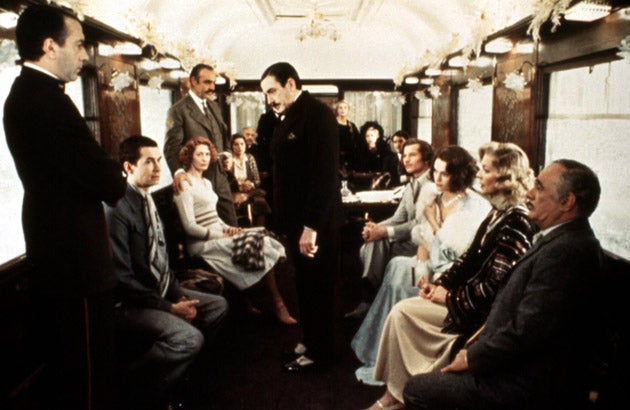Simon Calder: An icon of European rail travel is finally killed off

As an announcement of a momentous death foretold, it is remarkably economical. "Train 468/469," reports the September edition of the Thomas Cook European Rail Timetable "Strasbourg to Wien [Vienna] will finally be withdrawn." Between those two phrases is the most momentous pair of words in European rail travel: Orient Express. Seventy-five years after the publication of Agatha Christie's bestselling crime novel, Murder on the Orient Express, the train that epitomised trans-European travel for more than a century is finally being killed off.
Lest you have set your sights on a luxury rail trip aboard vintage rolling stock to Venice, allow me to put your mind at rest: the Venice-Simplon-Orient Express – the up-market private train – will continue to run. But the service that provided intrigue and inspiration for generations of travellers is to be axed with barely a whimper.
"Death by a thousand cuts" sums up the demise of the Orient Express. Since it first ran, on 4 October 1883, from Paris to the Danube city of Giurgiu, its trajectory has changed many times as frontiers and alliances in Europe have shifted. But the core route, which began 120 years ago, linked Paris with Istanbul.
The journey began at Gare de l'Est, still the most atmospheric of the termini in the French capital, and raced through the Champagne region, Lorraine and Alsace, crossing the Rhine at Strasbourg – where the current, much-truncated service begins. The last abbreviation of the Orient Express, two years ago, coincided with the opening of a new high-speed line from Paris to the Alsatian capital, rendering the old "classic" train between the Seine and the Rhine redundant: travellers are invited to travel at 200mph on the stretch from Paris, and change trains to the Orient Express.
The diminished service still has 113 days to run. Board by 12 December and soon after leaving Strasbourg you will pass the village of Appenweier in western Germany. Here, a self-aggrandising plaque announces this little halt to be the rail crossroads of Europe: where the line of the Orient Express crosses the line from Hamburg and Cologne south to Switzerland and Italy. Travellers sleep their way through southern Germany, arriving at Vienna's Westbahnhof – a station that retains a sense of style – at 6.40am.
For Orient Express passengers up to 1977, Austria's capital was just the beginning: Budapest beckoned, then Belgrade and Bulgaria, before the train brushed the Bosphorus and arrived at Sirkeci station in Istanbul – far from the most stately station in Europe, but handy for a boat to Asia, just 10 minutes away.
Who is to blame for the demise of Graham Greene's Stamboul Train? We travellers are, of course, abetted by low-cost airlines. They effortlessly undercut the longest rail trips in Europe. A one-way ticket on easyJet from Gatwick to Turkey's largest city the day after the demise of the Orient Express costs under £50, barely enough for a train from London to Paris.
Strange as it may seem, at a time when a glamorous trans-European train faces closure, "middle-distance" rail travel is enjoying a revival thanks to accelerated journeys; the new Trainseurope desk at St Pancras International in London is already extending its opening hours to cope with the demand for journeys deeper into Europe than the usual Paris/ Lille/Brussels trio.
As one travel icon faces extinction, another is coming to Britain. Greyhound plans to start low-cost, high-quality bus links from London to Portsmouth and Southampton next month. Any new service is good news for travellers. But while Greyhound and America's endless freeways make a perfect match, "Riding the Dawg" down the A3 to Hampshire lacks the romantic resonance of Interstate 80 from New York to San Francisco.
Life for the US bus traveller is not so rosy. Thomas Cook's new Overseas Timetable says of the new Greyhound US schedule: "As usual, there are even more reductions in services." Paul Moore of Greyhound's owner, First Group, says revenues are down by one-fifth, so "It does not make economic or environmental sense to run the same number of services that we did previously. We still link 3,000-plus destinations across North America." And soon New Hampshire will be joined by the original.
Airports play the name game
More evidence of the airports' need to attract traffic: Oxford airport's rebranding as the capital's sixth airport. London is still the world hub of aviation, with around 125m travellers likely to use its five "real" airports this year – many more than Paris, New York or Tokyo. No surprise, then, that the Oxfordshire airport should want to capitalise on the capital's desirability. But will it work? Plenty of other airports have attempted to manipulate geography in order to enhance their appeal. When the owners of Tees-side airport wanted a more distinctive name, they avoided the obvious contenders – the adjacent towns of Darlington and Middlesbrough – and opted for "Durham Tees Valley". And had the management of Coventry airport taken my advice to rebrand as "William Shakespeare Stratford International", the Warwickshire airport might not now be moribund.
East Midlands airport tried for a couple of years to describe itself as Nottingham, much to the irritation of the equidistant communities of Derby and Leicester. But it has now returned to the original name, perhaps partly because Icelandair once referred to it on a map as "Nothingham".
Join our commenting forum
Join thought-provoking conversations, follow other Independent readers and see their replies
Comments